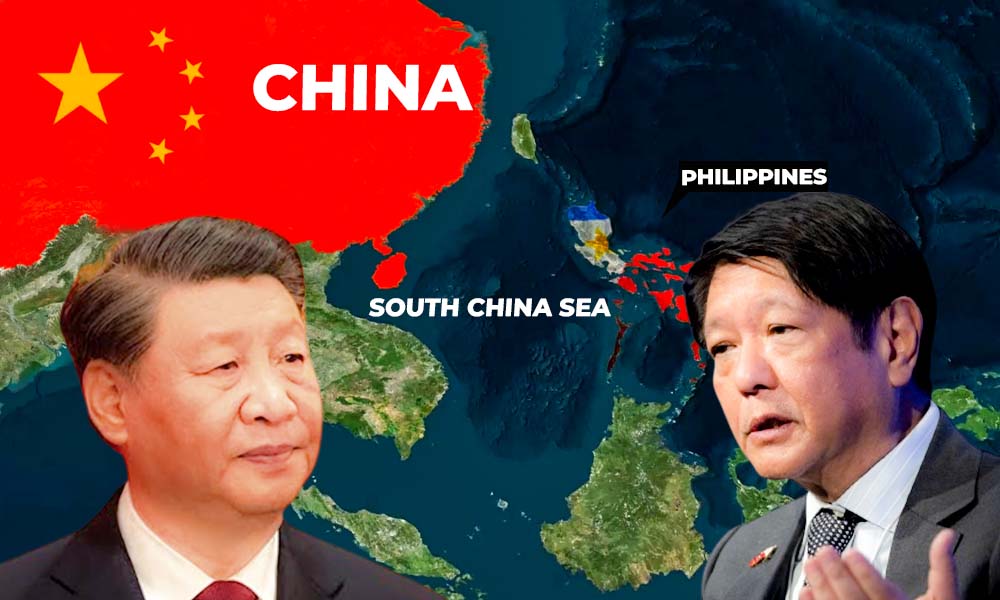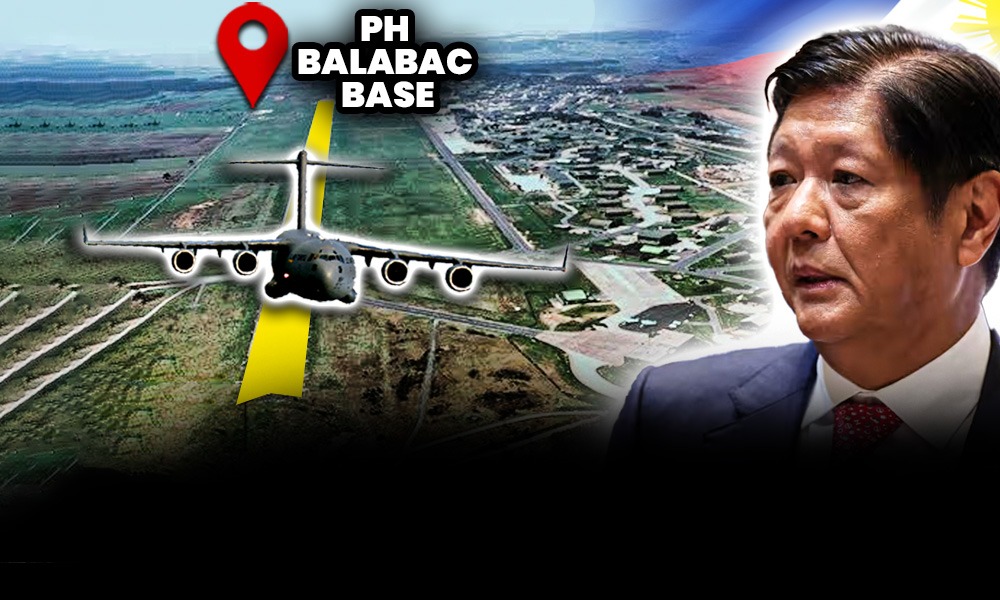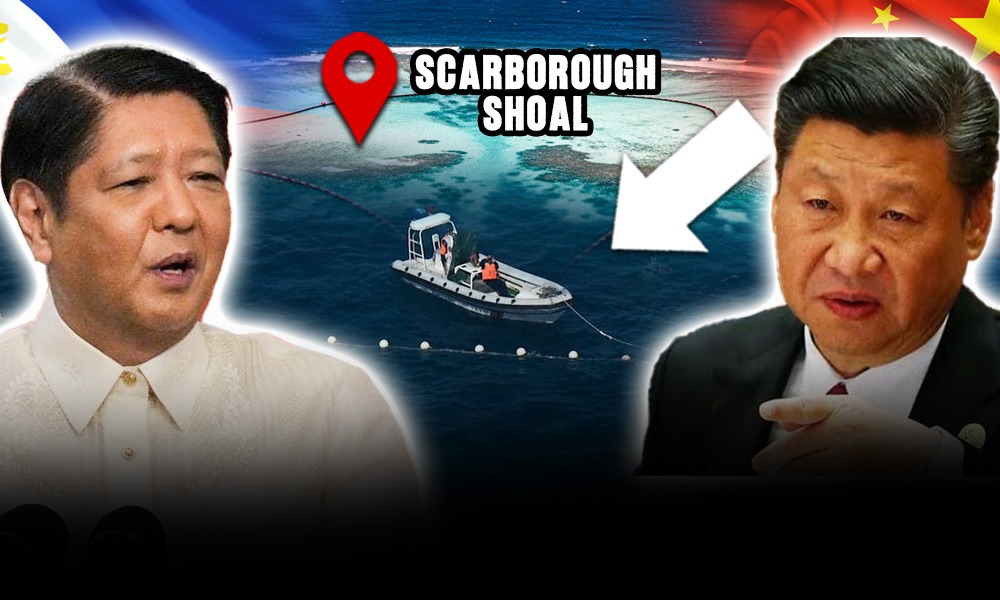A Brief
The Philippines’ response to China’s South China Sea claims involves legal victories, diplomatic pragmatism, military strengthening, and public sentiment. Amid a complex geopolitical backdrop, the dispute centers primarily on potential wealth which the area encases. Legal victories, such as The Hague ruling rejecting China’s “nine-dash line,” claims boost regional confidence. Diplomatically, the Philippines engages pragmatically and participates in South China Sea Code of Conduct talks. Under President Marcos Jr., military capabilities are fortified through alliances. Ongoing modernization, international support, and public sentiment balance define the Philippines’ resilient approach to safeguarding its territory in the South China Sea.
Background of Conflict: Why does the South China Sea matter?
The South China Sea stands at the middle of geopolitical tensions as international locations, including the Philippines, contest China’s expansive territorial claims driven by way of the vicinity’s wealthy natural resources. This vicinity, with its substantial continental shelf, shallow waters, and rich biodiversity, holds an estimated eleven billion barrels of oil and a hundred ninety trillion cubic toes of herbal gasoline. Beyond resource opposition, the South China Sea’s geostrategic significance is pivotal, serving as the gateway to the Strait of Malacca and the port of Singapore, essential for one of the world’s busiest shipping routes. Control over the Paracels and Spratlys islands translates to influence over the economies of Northeast Asia.
Moreover, the South China Sea is a vital source of sustenance, contributing to 8% of the world’s total commercial fishery production. This marine abundance is essential for feeding populous nations, ranging from Indonesia with 279 million to China with 1.4 billion citizens.
China’s sweeping territorial claims, particularly its rejection of a 2016 Permanent Court of Arbitration ruling, intensify the geopolitical contest. Satellite imagery reveals China’s aggressive land reclamation, constructing military installations and airstrips. In response, the Philippines, supported by the United States, counters China’s actions through legal avenues and Freedom of Navigation Operations (FONOPs). Japan also contributes to regional stability by enhancing maritime security capacity in partner nations. Amid the dire situation, Philippines stand firm as the pioneer nation among the littoral states to challenge China’s assertive claims in the South China Sea.
Philippines Legal Triumph
China’s assertion of its territorial boundaries in the South China Sea using the ambiguous new “ten-dash line” has been a source of contention and unease. This elusive demarcation, coupled with China’s growing strategic dominance in the region, has complicated assessments of the line’s legitimacy under international law. The Philippines took a significant step in 2013, by filing a case with the Permanent Court of Arbitration, seeking arbitration over China’s territorial claims and activities in the South China Sea. The culmination of this legal battle arrived in a landmark ruling in July 2016, when an international tribunal in The Hague unequivocally favored the Philippines, discrediting China’s “nine-dash line” claims as having no legal basis. This ruling carried profound implications for the future of the region, with an annual trade value of $5 trillion. However, China promptly rejected the tribunal’s decision, with President Xi Jinping dismissing the court’s authority and denying acceptance of the verdict.
The impact of the tribunal’s decision went beyond just the Philippines and China, reaching nations like Malaysia, Vietnam, and Indonesia, all of whom have concerns about China’s growing presence in the South China Sea. This ruling not only boosted the confidence of these countries but also marked a crucial turning point in the dispute. It highlighted the global importance of the issue, with countries like Vietnam, sharing territorial claims with China over the Paracel and Spratly Islands, strongly supporting the ruling.
The Philippines Vigilantly Safeguarded Territorial Integrity and Exclusive Economic Zones
The Philippines has exhibited unwavering determination to safeguarding its territorial integrity and Exclusive Economic Zone (EEZ) inside the South China Sea amid China’s territorial intrusions and expansive claims. This commitment is necessitated by the overlapping EEZ claims related to Brunei, Indonesia, Malaysia, the Philippines, Taiwan, and Vietnam. The Philippines has followed a comprehensive approach, regarding diplomatic protests against China’s activities, multiplied military spending targeted on maritime capabilities, and strengthened safety cooperation with the USA and local companions. Over the years, the Philippines has also actively sought international support and solidarity, engaging with regional bodies like the Association of Southeast Asian Nations (ASEAN) and Asia Pacific Economic Cooperation (APEC) forums among others.
Forged Resilient Alliances and Strategic Partnerships
The Philippines has deepened its alliances, particularly with the United States and Japan, to secure support and bolster capabilities in addressing the complex South China Sea situation. The Philippines has maintained a long-standing alliance with the United States through the Mutual Defense Treaty (MDT) signed in 1951, committing both nations to mutual defense in case of armed aggression. Recent years have witnessed the Philippines intensifying security cooperation with the United States, involving enhanced military exercises, increased defense aid, and equipment transfers. Simultaneously, the Philippines has strengthened ties with Japan, a substantial economic partner and a significant source of development assistance.
Diplomacy with Pragmatism
China stands as a significant economic partner for the Philippines, supporting substantial trade, investment, infrastructure development, and economic opportunities. While maintaining these economic ties is vital for the Philippines’ growth, it concurrently engages in diplomatic discussions with China to address South China Sea disputes. Diplomatic channels are considered crucial for minimizing the risk of escalation and resolving differences through dialogue.
Likewise, The Philippines actively participates in negotiations for a South China Sea Code of Conduct (COC), a pivotal diplomatic endeavor aimed at establishing rules and norms in these disputed waters. Its primary objective is to prevent and manage disputes while reducing tensions and averting military confrontations. The process of COC negotiations involves a series of discussions, compromises, and agreements, which may take time to achieve a comprehensive and mutually acceptable COC.
A vital aspect of the Philippines’ overseas policy is the steady lodging of diplomatic protests against China. These protests encompass issues such as unlawful fishing inside the Exclusive Economic Zone (EEZ), the presence of Chinese maritime armed forces challenging Philippine sovereignty, and the construction and militarization of artificial islands inside the Philippines’ EEZ.
Likewise, The Philippines actively engages with nearby businesses, with a primary cognizance on the Association of Southeast Asian Nations (ASEAN), to establish a unified front in responding to China’s assertive actions within the South China Sea.
The Philippines’ potential to stable global help from countries consisting of Australia, India, and the European Union performs a crucial position in its approach for addressing China’s movements inside the South China Sea.
Bolstered Military Presence and Capabilities
Under President Ferdinand Marcos Jr., the Philippines has shifted its military focus towards safeguarding national borders, departing from the approach of former President Rodrigo Duterte. Seeking stronger defense ties with the United States, Marcos has granted access to additional military bases under the 2014 Enhanced Defense Cooperation Agreement (EDCA). This agreement allows joint training, equipment prepositioning, and facilitates military cooperation. The U.S. has provided $100 million in military aid, including $82 million to upgrade strategically positioned EDCA sites in the South China Sea and near Taiwan. The largest-ever joint military exercises between the two nations in April, featuring live-fire sea drills, signaled a commitment to defense. Following a summit between Presidents Marcos and Biden in May, the Pentagon explicitly pledged to defend the Philippines in the event of a South China Sea attack, issuing a warning to China.
The ongoing modernization efforts of the Philippines Navy and Coast Guard mark a significant development to enhance maritime security capabilities in the South China Sea. President Marcos Jr. emphasized that safeguarding borders now supersedes countering communism and al-Qaeda-affiliated groups as the military’s primary objective.
Heightened Public Sentiment
Public sentiment in the Philippines significantly influences the government’s approach to the South China Sea dispute and its stance towards China. It exerts an impact through domestic pressure, nationalism, accountability, international support, and diplomatic negotiations. The government faces the challenge of carefully balancing public sentiment with diplomatic efforts and regional considerations to effectively address the South China Sea issue.
Moving Ahead
In summary, the Philippines employs a multifaceted approach, including legal victories, diplomatic pragmatism, military strengthening, and public sentiment, to counter China’s territorial claims in the South China Sea. From legal triumphs at The Hague to forging strategic alliances and bolstering military capabilities, the Philippines navigates complex geopolitical challenges. Actively engaging international support and carefully balancing public sentiment, the nation emphasizes a comprehensive strategy to safeguard territorial integrity and regional stability amid the South China Sea dispute.



